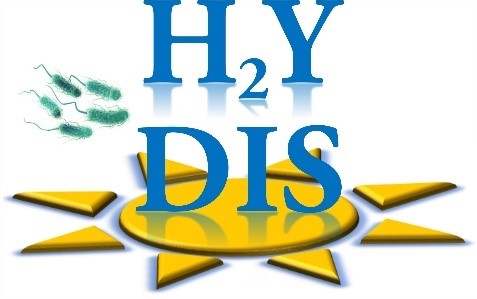Two global problems are the spread of infections by antibiotic-resistant strains of microorganisms and the need to replace fossil fuels with renewable energy sources due to their depletion and harmful pollution of the environment. To solve those two problems, we will prepare a novel multifunctional visible-light-responsive inorganic-organic hybrid nanomaterials with dual potential applications in photocatalytic hydrogen production and wastewater disinfection. To this end, for the first time, absorption of wide-bandgap metal-oxides into desirable spectral range, visible or near-infrared, will be extended due to the formation of interfacial charge transfer (ICT) complexes with main components of plant extracts, polyphenols. In addition, the entire architecture will be linked to the polymer matrix. We expect significant improvement in the photocatalytic ability of hybrids due to enhanced absorption in the more practical visible spectral range, which will be evaluated by the efficiency of hydrogen production in the water-splitting reaction. Also, the photo-induced toxic action of hybrids against microbial species will be monitored, first under static conditions and then under dynamic conditions, mimicking the technological process of wastewater treatment. Considering the actuality of the proposed topic, the impact of the project will be felt on the scientific community, society, industry, healthcare, education, and environment.
Multifunctional visible-light-responsive inorganic-organic hybrids for efficient hydrogen production and disinfection
- Details
- Category: National projects
Acronym / code:
HYDIS / 5354


Project type:
PRIZMA
Realization period:
2023 - 2026.
Project funded by:
Science Fund of the Republic of Serbia
SRO project holder:
Institut za nuklearne nauke „Vinča“
- Institute of Chemistry, Technology and Metallurgy; National Institut of the Republic of Serbia, University of Belgrade;
- Faculty of Technology and Metallurgy, University of Belgrade;
- Innovation Center, Faculty of Technology and Metallurgy; University of Belgrade
Principal investigator:
Vesna Lazić



